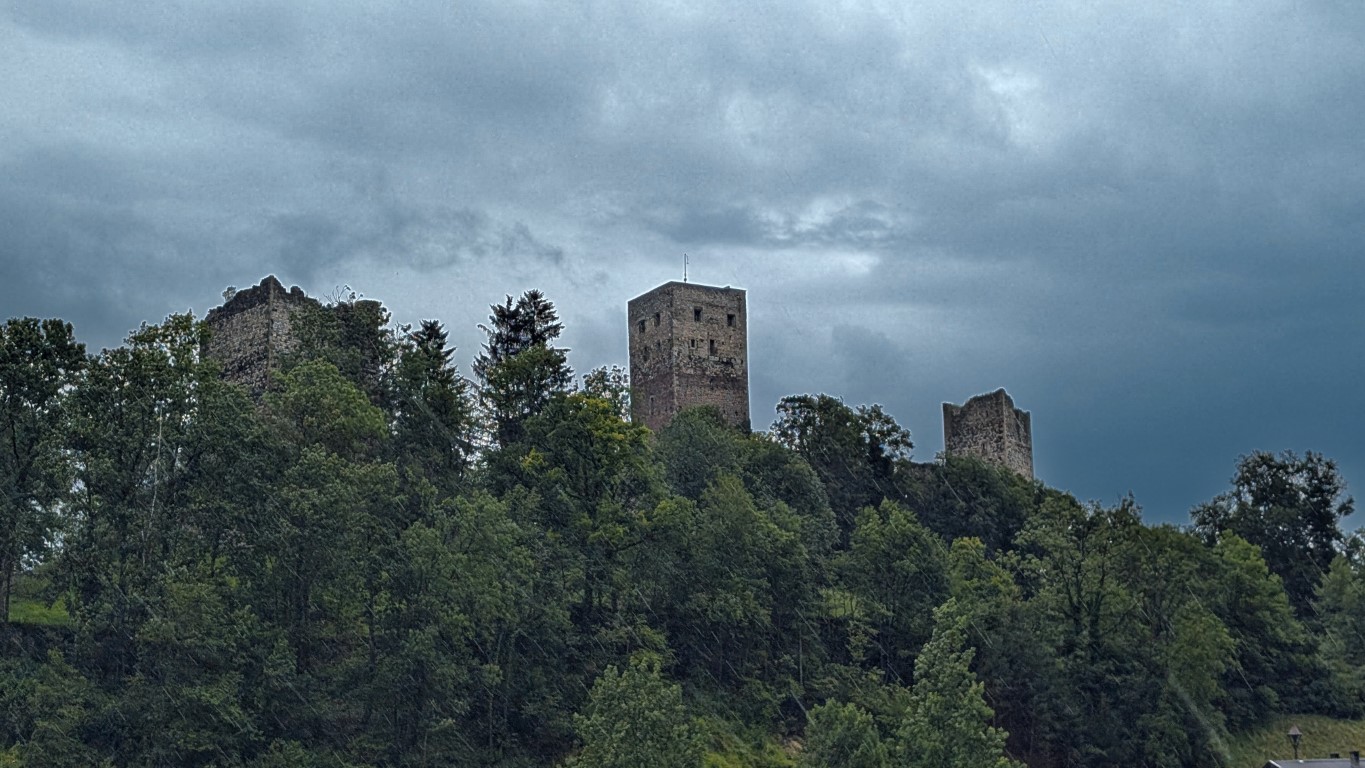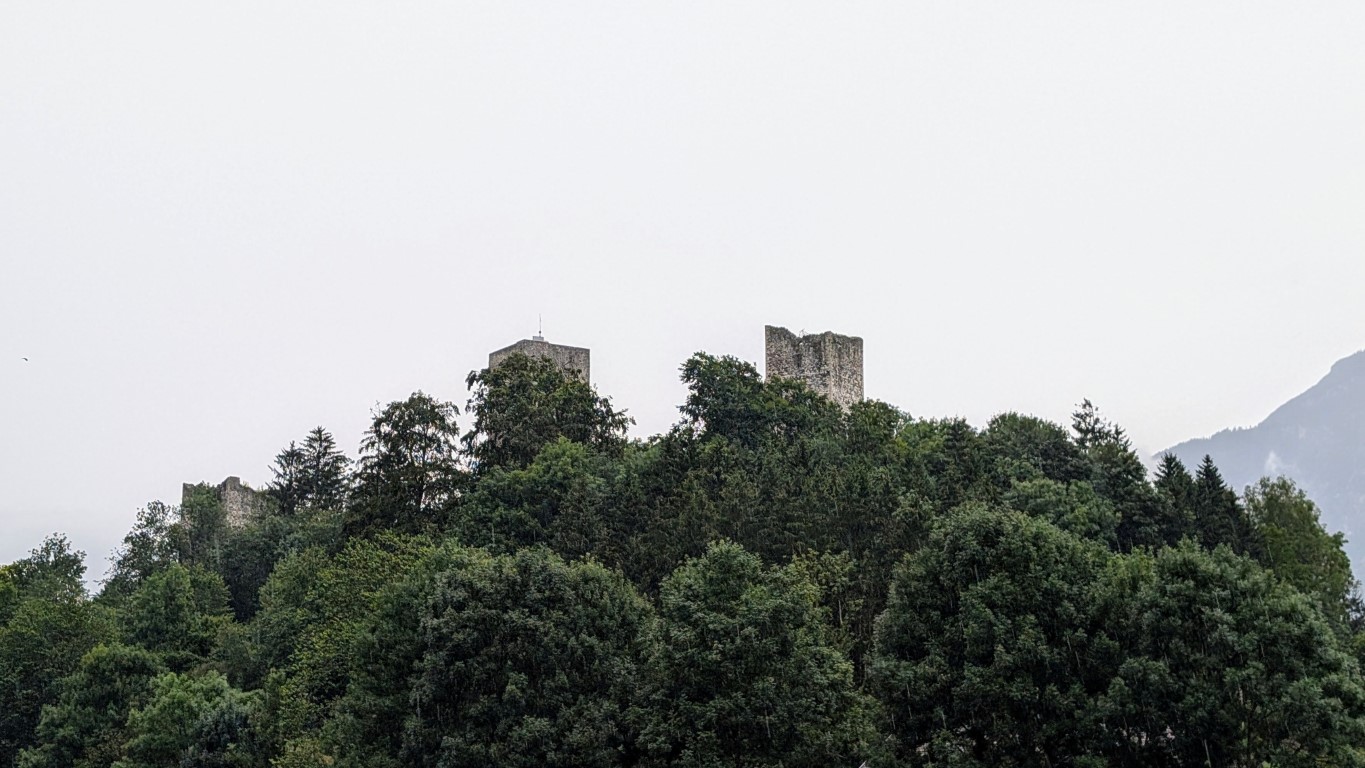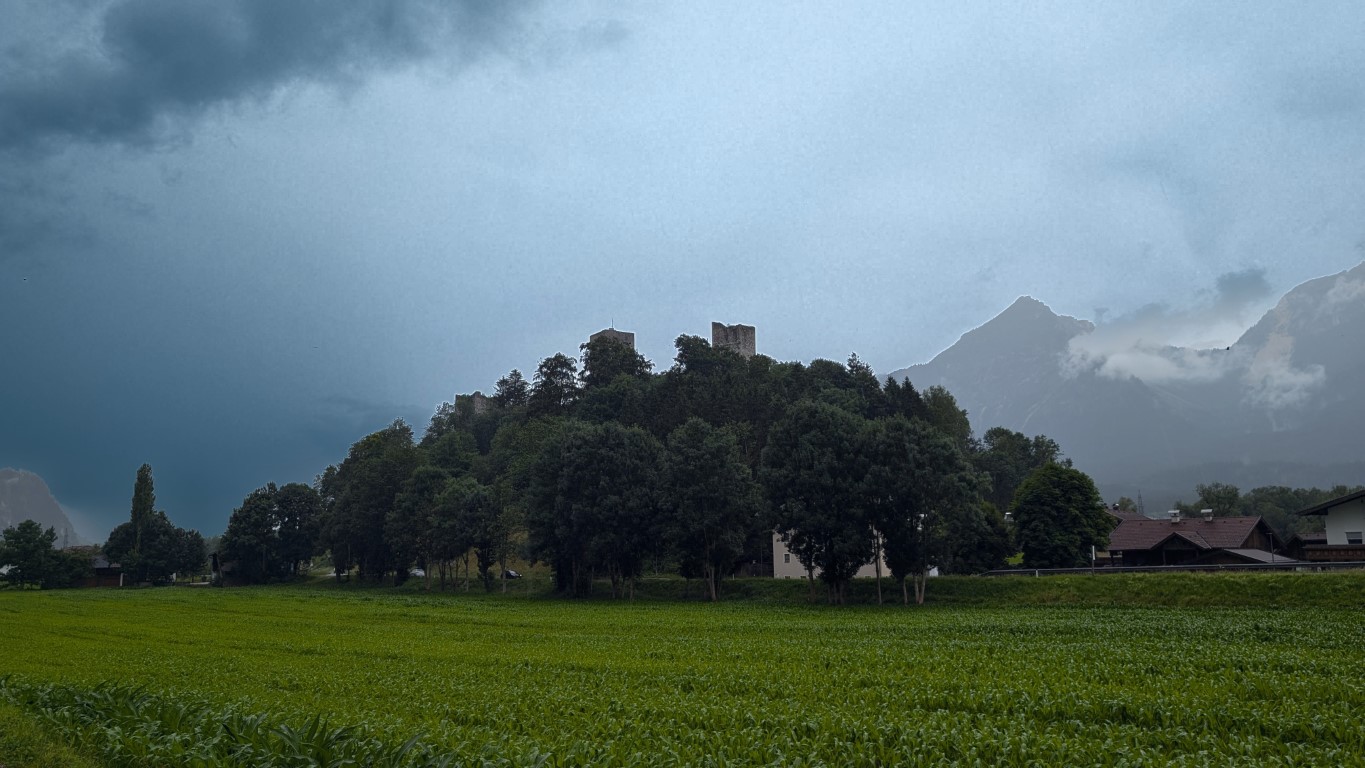In the middle of the magical Alpbach Valley, right on the busy main road near St. Gertraudi, stands one of the most magnificent castle ruins in the country: the majestic Kropfsberg Castle. Its three proud towers rise into the sky like stone sentinels and tell of a glorious past. The protruding keep in the west, the Romanesque stronghold with its two keeps, the protective ring wall and the former nursing home form an impressive ensemble that once served as a defensive gate tower.
This mighty border fortress of the Salzburg archbishopric, the first buildings of which were built around 1147, underwent a magnificent transformation in 1217. The first documented mention of the castle dates back to 1296, while the care home was not added until 1753. In the last days of the Second World War, the middle tower was hit by a bomb, but was later rebuilt in its former glory. Today, the castle is owned by the Dkfm. H. Vogl-Fernheim family and continues to tell its story to curious visitors.
Built around 1200 or even earlier by the Archbishops of Salzburg, the castle was intended to protect their valuable possessions in the Zillertal. Managed by loyal castellans and caretakers, Kropfsberg Castle is particularly impressive due to its three mighty towers, which were once crowned with battlements. The main tower in front, carefully built with regular brickwork, rises in particular splendor. The other two towers were later fitted with living quarters, which gave them an impressive height.
The ruins of Kropfsberg Castle are not only witnesses to times gone by, but also a living fairy tale made of stone. Every stone, every tower and every wall whispers stories of brave knights, proud archbishops and a time when the castle watched over the land and protected its inhabitants. Today, surrounded by the picturesque beauty of the Alpbach Valley, the castle remains a place of magic and history that inspires the imagination and enchants the hearts of visitors.
Story
The Salzburg archbishops acquired significant areas in the Zillertal. Under Archbishop Konrad I of Salzburg, the first castle was built at the entrance to the Zillertal in the first half of the 12th century. Initially it was probably just a tower surrounded by walls. The castle served as the seat of the Salzburg court and administration and was first mentioned in documents in 1286.
Archbishop Eberhard II of Regensberg had the castle expanded, which led to its current appearance. The main castle with two impressive keeps was built above the old tower.
In the 15th century, Kropfsberg Castle played a key role in important negotiations. In 1412, a dispute between Tyrol and Bavaria was settled there, and in 1416, Duke Friedrich IV and his brother Duke Ernst of Austria were reconciled.
In the period that followed, Kropfsberg underwent two Romanesque reconstructions, but remained unchanged during the Gothic period. Archbishop Leonhard von Keutschach had the complex refortified around 1500, and 40 years later a 900-meter-long, 8-meter-high and 3-meter-thick ring wall with semicircular bastions was built.
In the following century, Kropfsberg was one of the largest castles in Tyrol, protected by a double ring wall and an area of 26,000 square meters that could accommodate 60 to 80 people.
The court was moved to Zell am Ziller in 1592, which led to the castle complex falling into disrepair. From 1673 onwards, buildings began to collapse, and during the "Bavarian Rumble" in 1703, Bavarian soldiers were fought and driven out.
After Tyrol became part of Bavaria in 1809, the castle continued to decay. In 1850, the gate tower was renovated to make it habitable, and in 1905 the material from the preserved ring wall was used for building purposes.
In 1940, Sepp Auffinger from Merano bought the ruins and had the gate tower restored. During the Second World War, the western palace wall was damaged by bombs. Since 1985, the castle ruins have been conserved and restored, with the remains of the cistern and the Gothic castle chapel still preserved. Today, the castle is privately owned by Hanno Vogl-Fernheim.
Access
The castle is not accessible.









